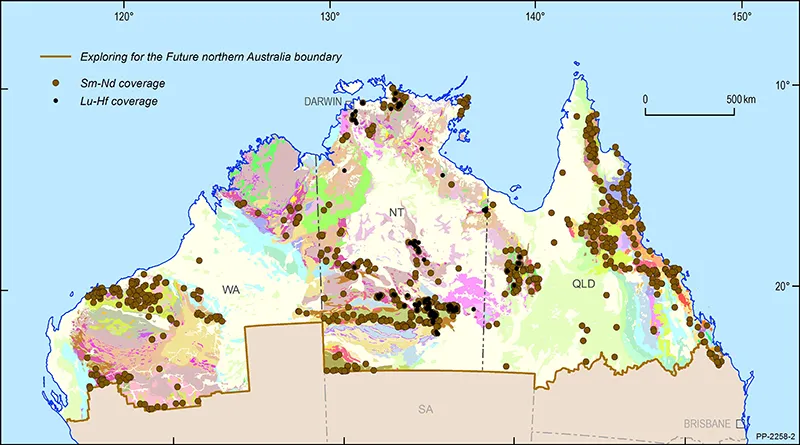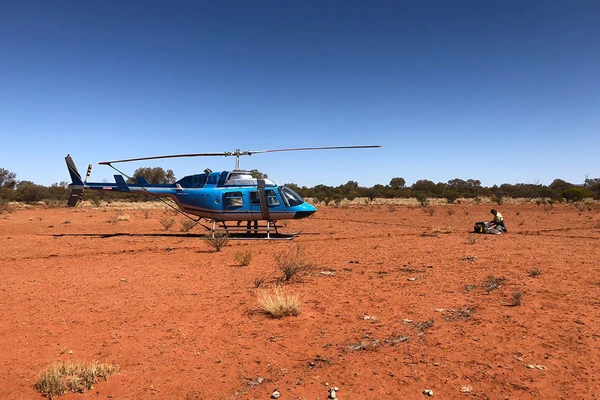The Geochronology and Isotopic Mapping component of the Exploring for the Future program provides key isotopic datasets in both tabulated compilations, and map form for visualisation with other geological datasets. Geochronology and Isotopic Mapping provides geologists with an understanding of the changing nature of the geology of Australia through time, including when mineral systems were active, and helps guide prediction of the likely distribution of undiscovered mineral resources.
Key components
Uranium-Lead (U-Pb) geochronology and age maps of Australia
The U-Pb geochronology component involved acquisition of new SHRIMP U-Pb ages from key samples, as well as compilation of published age data, both from Geoscience Australia and other sources. The national geochronology compilation includes ~7,000 data points across Australia, and is available to view or download via the Geoscience Australia Portal.
Samarium-Neodymium (Sm-Nd) and Lutetium-Hafnium (Lu-Hf) isotopic analyses of magmatic rocks to develop model age maps of Australia
The Sm-Nd isotopic composition of felsic magmatic rocks can be used to provide a broad indication of the bulk crustal agea model ageof the middle and lower crustal source region of these rocks. A similar approach can be taken through Lu-Hf isotopic analysis of zircon. By utilising these isotopic systems to produce model age maps, we can visualise the development of the Australian continental crust through time, and investigate relationships with the formation of mineral deposits.
Lead-Lead (Pb-Pb) isotopic analyses of sulphide minerals to develop a Pb map of northern Australia
The Pb isotopic composition of Pb-rich sulphide materials (e.g. chalcopyrite, galena and sphalerite) reflects the isotopic composition of the fluids from which those sulphides were derived. This isotopic signature provides evidence of the sources of fluids that have transported metals, such as copper (Cu), lead (Pb), zinc (Zn), and gold (Au).
Collaboration
The Exploring for the Future Geochronology and Isotopic Mapping activity was a collaboration between Geoscience Australia and the following agencies and institutions:
- Northern Territory Geological Survey
- Geological Survey of Queensland
- Geological Survey of South Australia
- Geological Survey of Western Australia
- Geological Survey of New South Wales
- Geological Survey of Victoria
- Geological Survey of Tasmania
- Australian National University
- Curtin University
- University of Melbourne
- University of Alberta












